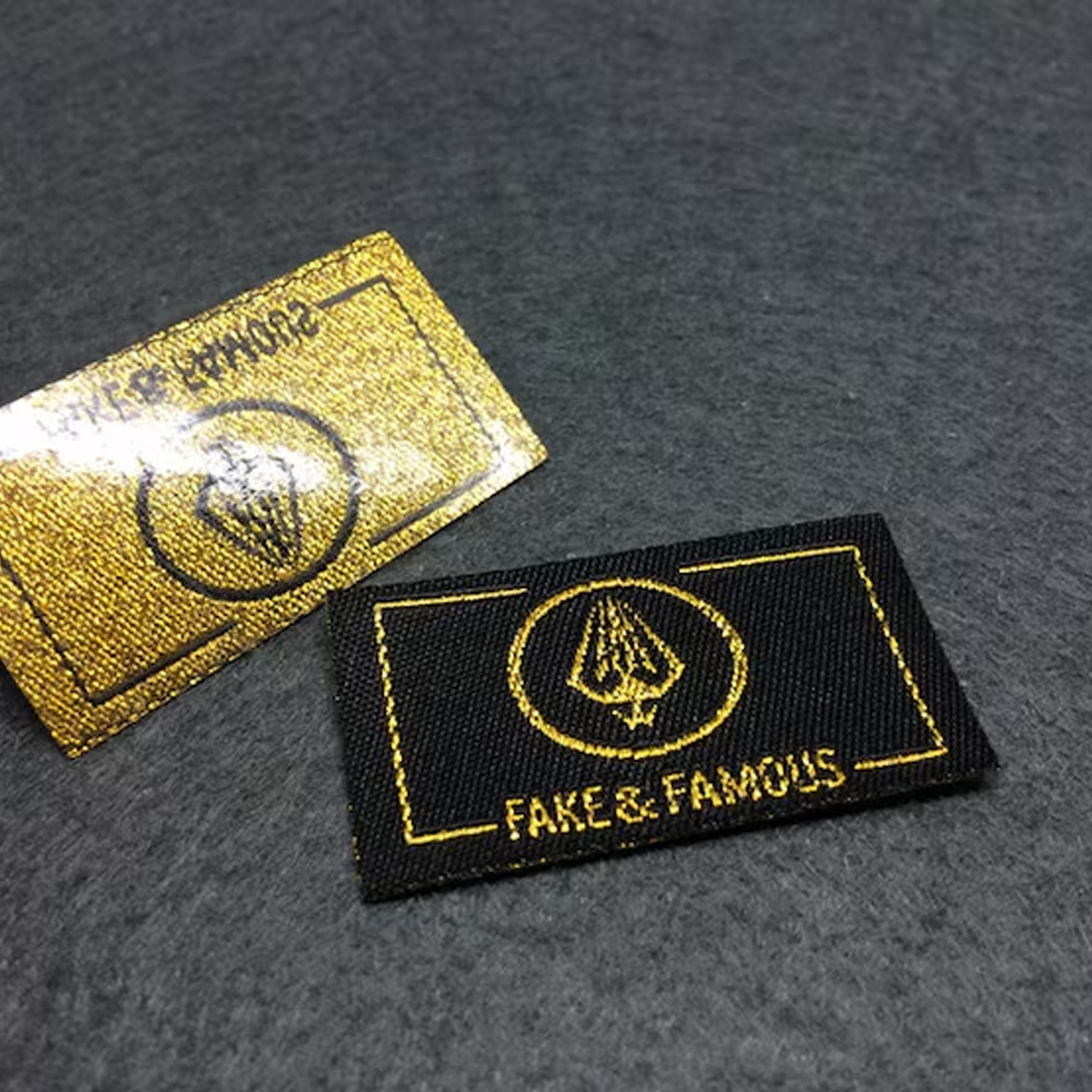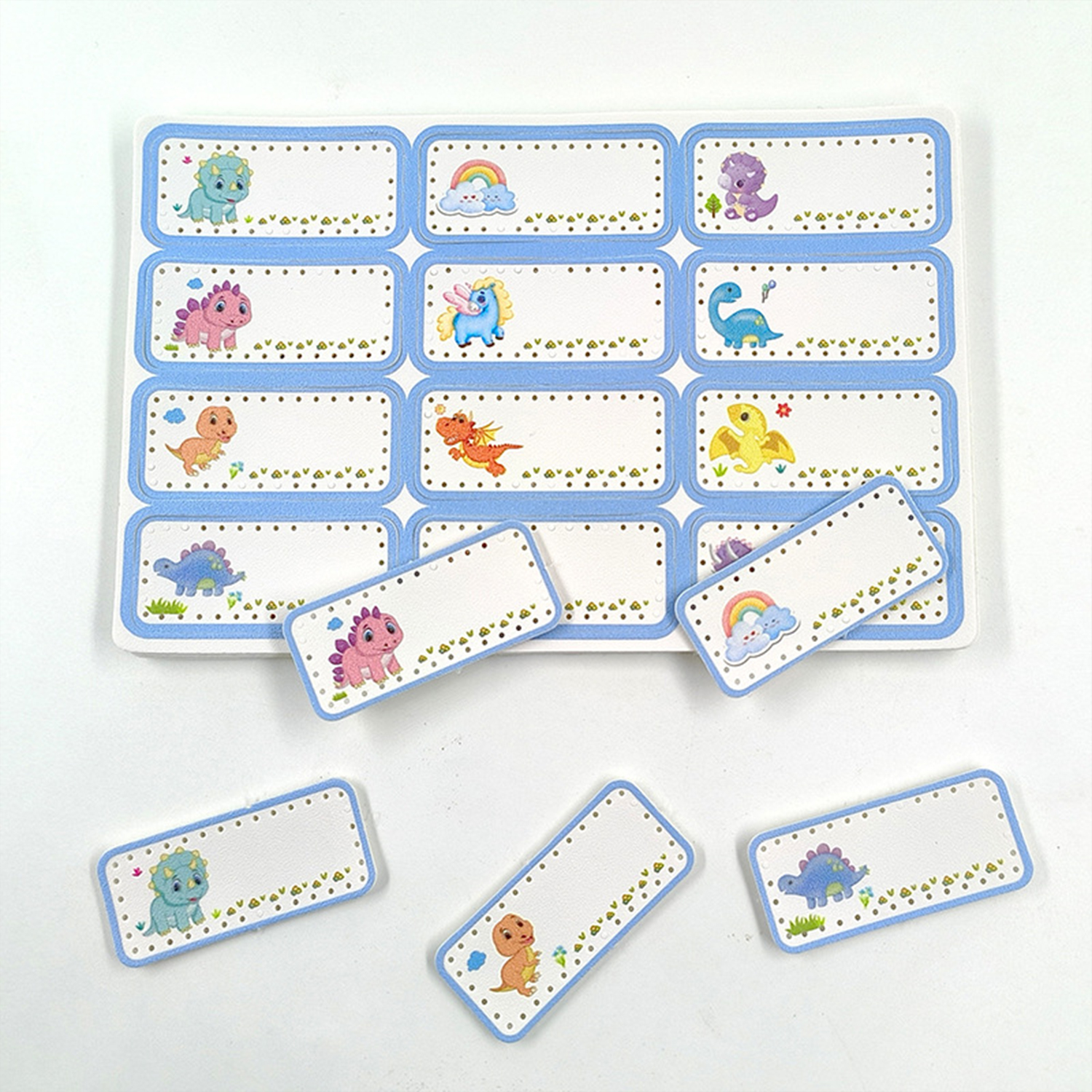




| Iron on Label | |
| Shape | Customized |
| Materials | Synthetic paper |
| Performance | Waterproof, Wear-resistant, Tear resistant, Widely used |
| Colour | Pantone and RAL color matching system |
| Adhesive | Water glue, Hot glue, Movable glue |
| Optional Process | Hot stamping, Film coating, Drum, Multi-layer bonding |
| Printing | Letterpress Printing, Digital Printing, PS Printing |
| Long-term Temperature Resistance | -25℃~53℃ |
| Thickness of Epoxy | 0.1~0.5mm |
What is A “Iron on Label”?
An “Iron on Label” is a label affixed to the surface of clothing, fabric, or other material by ironing. Such labels are usually made of special thermal adhesive or hot melt adhesive, which can be easily and quickly attached to the desired location. Mainly used for clothing, shoes, bags, bedding and other items identification and decoration.
Iron on label can provide product information (such as brand, size, washing instructions, etc.), personalization (such as name, pattern, etc.), and increase the beauty and recognition of items. Iron on label is usually made of fabric materials such as polyester fiber, cotton thread, and coated with heat sensitive adhesive or hot melt adhesive. These materials have good wear resistance, wash resistance and high temperature resistance.
Features & Benefits of Iron on Label Include:
Product Features
Material diversity: The material of iron on label usually includes polyester fiber, cotton thread and other fabric materials, which have good wear resistance, wash resistance and high temperature resistance. At the same time, they are coated with special heat sensitive adhesive or hot melt adhesive to ensure that they can be firmly attached to the item during the ironing process.
Customized design: Iron on label can customize the design according to the needs of customers, including the choice of font, color, pattern and other elements to meet the needs of different occasions and uses. This personalized design not only enhances the beauty of the item, but also increases its recognition.
Quick application: By ironing, iron on label can be quickly and easily fixed to the surface of clothing, fabric or other materials. In general, the ironing process takes only a few tens of seconds to complete, greatly improving production efficiency.
Durability: Iron on label has good durability and can withstand multiple washes without affecting the clarity and integrity of the label. This makes ironing labels ideal for identifying and decorating items for the long term.
Product Benefits
Brand promotion: For consumer goods such as clothing, shoes and hats, the brand identity and logo on iron on label is an effective way of brand promotion. It can help consumers quickly identify and remember brands among many products, thereby increasing brand awareness and loyalty.
Product information: The iron on label can also mark the relevant information of the product, such as size, washing instructions, etc. This information is very practical for consumers to help them better understand and use the product.
Personalized customization: Through the customized design of iron on label, consumers can add personalized elements to their own or others’ items, such as name, birthday, special patterns, etc. This personalized customization not only meets the individual needs of consumers, but also increases the uniqueness and commemorative significance of the item.
Improve production efficiency: Compared with traditional sewing or attaching labels, the application process of iron on label is faster and easier. This can greatly shorten the production cycle, improve production efficiency, and reduce production costs.
Environmental protection and energy saving: The application process of iron on label does not need to use additional adhesives or chemicals, so it is more environmentally friendly and energy saving. At the same time, due to the good durability of iron on label, waste and pollution caused by label falling off or damage can be reduced.
BX Panel Iron on Label Technical Information
- Material preparation
Substrate material: The substrate of iron on label is usually made of fabric materials such as polyester fiber and cotton thread. These materials need to have good wear resistance, washable resistance and high temperature resistance to ensure the stability and durability of the label during ironing and use.
Heat sensitive adhesive or hot melt adhesive: This is the key material for the label to be able to attach to the surface of the item. Heat sensitive adhesive or hot melt adhesive will melt and adhere to the base material and the surface of the article when subjected to heat, forming a strong bond.
- Design and printing
Design: According to customer requirements, the design team will create iron on label pattern, text, fonts and other elements. The design process may need to consider the size, shape, color, and coordination of the label with other elements.
Printing: After the design is completed, the pattern and text are printed onto the substrate using specialized printing techniques. The printing process needs to ensure clarity, color reproduction and durability of patterns and text.
- Cutting and finishing
Cutting: After printing is complete, the iron on label needs to be cut to form the desired shape and size. This is usually achieved by means of laser cutting, thermal cutting or mechanical cutting.
Finishing: The iron on label needs to be finished after cutting, including removing excess material and checking the integrity and quality of the label.
- Glue and compound
Glue: Apply heat sensitive glue or hot melt glue to the back of the iron on label. This process requires ensuring that the adhesive layer is uniform, of a moderate thickness, and does not penetrate the front of the label.
Compound: After gluing is complete, it may be necessary to compound the iron on label with a protective film to protect the glue layer from contamination or damage. The protective film is removed before final use.
What Special Features Can Be Incorporated into Iron on Label?
Anti-counterfeiting function: Anti-counterfeiting technology, such as special ink, two-dimensional code or RFID chip, is incorporated into iron on label, which can effectively prevent the appearance of fake and inferior products and protect the rights and interests of consumers.
Environmentally friendly materials: The use of environmentally friendly materials to make iron on label, such as degradable materials or recycled materials, helps to reduce environmental pollution and enhance the brand image.
Water resistance: Ensure that the Iron on Label will not fall off or blur when exposed to water, maintaining the clarity and integrity of the label.
Chemical resistance: For products that need to be exposed to chemical substances, such as washing supplies or cosmetics, label needs to have good chemical resistance to prevent chemical substances from causing damage to the label.
Non-irritant: Ensure that the material and glue of label will not cause irritation or allergic reaction to the skin, and improve the safety of the product.
Softness: Properly control the thickness and softness of the iron on label to ensure that it will not cause discomfort to the wearer during use.
What Industries Use Iron on Label?
Clothing manufacturing: In the clothing manufacturing process, iron on label is often used to identify brand, size, washing instructions and other information. These labels can be firmly adhered to the clothing, easy for consumers to consult and maintain.
Textile labeling: Textiles such as bedding and towels are also often labeled with iron on label to provide product information and maintenance guidance.
In the production process of footwear products, iron on label is also used to mark the brand, size, material and other information. These labels are usually located in places such as the tongue, the inside of the shoe or the sole of the shoe for quick identification by the consumer.
In the field of household goods and decorations, iron on label can be used to identify product names, materials, instructions and other information. For example, curtains, carpets, throw pillows and other products may use this label.
Luggage and accessories industry also often use the label to label the brand, style, origin and other information. These labels help to promote product recognition and brand image.
In some industrial and manufacturing fields, iron on label can be used to identify product batch, production date, safety warning and other information. These labels play an important role in product tracking, quality management and safety assurance.